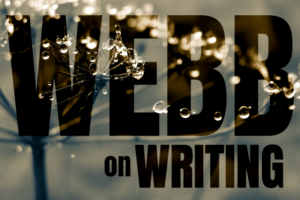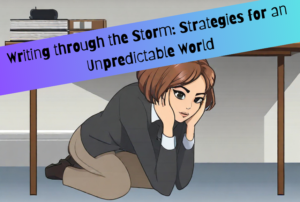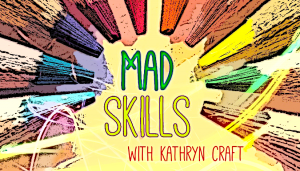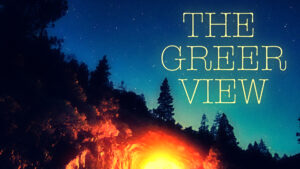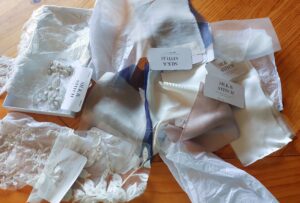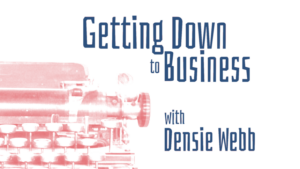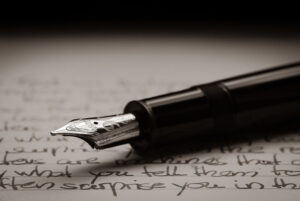REAL WORLD
I must admit, I have history on the brain these days. It should come as no surprise that as a historical fiction writer, I subscribe to the idea that history is always relevant. Understanding what has passed is the answer to our whys and hows, and becomes the building blocks of the future. While reading (and writing) historical fiction, I’m searching for aspects not always present in other genres of fiction, that are, in fact, the hisfic genre’s strengths. Things like:
Today, history is being made around us, for better or worse, and as writers, it’s nearly impossible not to consider how that affects our ways of life as well as our thinking. To many of us, we’re watching in horror as history’s dark past becomes the present once again. It seems we are doomed to repeat history as is so often said, because the human memory is short, and frankly, I don’t know many teenagers—or many adults—who have learned from someone else’s mistakes. Mostly we learn from our own. So here we are, in the midst of a great conflict.
Lately, common words in our everyday vocabulary are:
protest, resist, contradict, agitate, depose – all examples of CONFLICT
Another way to view conflict J. Turnbull of Oregon State University shares with eloquence: conflict really means “thwarted, endangered, or opposing desire.” These are fundamental words to those who wish to protect democracy, protect rights, protect others, but they’re also fundamental words in our writing lives. Conflict in all its forms are essential to a character’s journey and development, and ultimately, to the outcome of their fate.
There are many ways to sew conflict into a story, both externally and internally. A combination of both makes for a stronger narrative in general, though some character-driven stories are quite successful with the majority of the conflict being internal as well. We probably know a lot about conflict already, but I find after years and years of writing, it’s still easy enough to lose my way. Fiction writing is complex and each new story brings its own set of challenges. To help keep me on […]
Read MoreI had just pretzeled myself under a desk at work to wait out an earthquake drill when the fire alarm started blaring. Seriously? Someone was taking this preparedness exercise a little too far. But fire beats earthquake in the disaster hierarchy, so I crawled out from my safe space and exited the building with the flood of other workers.
While standing around under threatening rain clouds, it occurred to me that writers could probably benefit from some disaster planning too. Anything from writer’s block to the (cough, cough) political environment can affect your writing—and your general well-being, so it’s worth taking a few minutes to think about how you’d handle a variety of potential disruptions.
I’m not trying to be a downer. Just the opposite. I recently had to run through this exercise for myself because my husband and I both work in what recently became a precarious industry. (My deepest sympathies to all those who’ve been laid off or might be impacted.) After a few days of worrying about it, we decided to take action by creating a “We Lost Our Jobs” scenario budget that stripped out every nonessential. Then we calculated how long we could last without new jobs before we’d have to sell or rent our home and move somewhere cheaper.
Not fun, but now I know what that looks like, and I feel much better. I’m no longer spinning on how bad it could be. Once you’ve made the unknown known, and determined how to survive it, the scary monster loses its teeth.
So let’s talk about some of the crises a writer might face, and how to mitigate the risks now to set your mind at ease.
Financial Drought
Trying to make a living as a writer can be tough. Contracts collapse or come too infrequently, algorithms change, markets get saturated, and genre popularity fluctuates.
What can you do now to help you weather a sudden drop in income?
You could keep your resume current, take a part-time job to give yourself some reliable income, or take on some freelance work. Or maybe find somewhere in the budget to cut back, and start putting cash into a rainy-day fund while the skies are still clear.
World on Fire
Sometimes life throws everything at you. Financial problems, health issues, family emergencies, natural disasters, and even fun things like babies and weddings and retirement.
What would happen to your writing—and possibly your income—if you were too busy, sad, stressed, or distracted? There’s a good chance it would stop.
Can you build some contingency padding into your next deadline/contract? Could you commit now to allowing yourself to deal with the event without the added stress of trying to write (unless it provides a positive distraction)?
Health Hurricane
Injuries, aging, hormonal changes, and disease impact everything, including your ability and/or desire to write.
I won’t get into all the health advice, but you probably know at least one thing you could do that would have a positive impact on your future health. Will you pick one and start today?
Technology Tornado
Even the most tech-savvy writer can have a computer disaster. To mitigate the risk of losing all those hard-won words, I urge you to create daily backups. Ideally, you’d have at least one that’s not colocated with your computer.
Also, it’s good practice to restart your […]
Read More
For as long as I can remember, I’ve wanted to be a writer. I know that’s not every writer’s journey. Some come to it a little later. Some much later. But as soon as I had my first taste of a book, I wanted to write. I wanted to create in others what I felt when I read a book. Joy. Wonder. Hope.
When children dream, they don’t know to doubt themselves. (I also wanted to be an Avon lady, because I helped my mom hang Avon books on the neighbors’ doors.)
The dream of being a writer never wavered, although I grew up in a low-income household and I soon learned what people thought of the “poor” desiring creative careers. We were supposed to be working people, not people who dream of writing books. What kind of living was that?
Pursuing that dream got more complicated in college, where I was on full scholarship. A well-meaning academic advisor suggested I choose something like journalism, which would have a steadier income than creative writing. I wouldn’t know until later that this suggestion was likely because I was a scholarship and federal grant student. I didn’t come from money.
I worked in journalism for a while, but the writing dream never left me. I wanted to write books. Fiction books. For everyone, but especially kids and teens.
It took me more than a decade—when a lay-off finally cut off my steady income—for me to decide I’d ignore all those voices that told me writing books wasn’t what I was supposed to do or allowed to do or even qualified to do…and do it anyway.
What does a dream cost? Pursuing one is complicated. Sometimes incredibly disappointing. Maddening. Discouraging. And yet some moments it’s so very beautiful I think, My gosh, I’m glad I kept going.
The dream we have will cost us. It will cost us time and energy and sometimes people or a certain kind of life we imagined for ourselves. Hope, too. But there will be glimpses of beauty so breathtaking we’ll think, How incredibly lucky I am. I’m so glad I get to do this.
As we go about chasing this beautiful, ridiculous dream, here’s what I want us to remember:
The dream will take time
It may take much, much longer than we expected or wanted or maybe even longer than we can comprehend.
I’m not always a patient person, especially when it comes to waiting on a dream. Sometimes it will feel or seem like it’s right around the corner, but here’s the honest truth: things sometimes appear closer than they really are. It’s like when I’m out on one of my long runs and I set my sights on something in the near distance—or seemingly near distance—except it never seems to get closer.
The nearness is a mirage. Dreams like to be seen—but they’re not always as close as they appear. We have to make sure we exercise patience, so we don’t settle for a mirage instead of the real thing.
Maybe it helps to remember that part of the dream is its anticipation. And the journey toward it.
The dream will likely cost something “good”
It will cost time or energy or something we like or love. We don’t have unlimited amounts of time and […]
Read More
Back when I used to work in advertising, I routinely found myself at photo or commercial shoots that appeared to be unequivocal disasters. A freezing fitness model wearing a thin running tank top in March in Baltimore. A professional golfer on a beautiful day in Texas bundled up in a rain-proof jacket. A red sweater that needs to be blue because of a problem in a factory on another continent. A midday that’s meant to be sunrise.
As a copywriter I was a natural-born pessimist, so in these situations I’d always look with trepidation at one of the art directors. “Dude, chill,” they’d say. “We’ll fix it in post.”
I was reminded of that expression last year after finishing the first draft of my sixth novel. I’d pitched the book as a holiday love story about a grieving widow and widower who find comfort and eventual happiness while binge watching classic Christmas movies together. A few weeks after I turned it in, when my editor called with her feedback, our conversation started out great. The draft was funny, heartfelt…etcetera.
“I do have some notes, though,” she said.
I’ve been at this long enough to know that editors always lead with what’s good, so I was prepared for that. Still, though, I held my breath.
“Your main characters don’t really watch that many movies together,” she said.
I kept not breathing as she noted the exact number of movies watched. It was, indeed, not many.
“And, you know,” she continued, “for a love story, they spend almost no time together until the very end. And, well, there’s not a lot of Christmas stuff going on, is there? You’d think there would be, it being December and all…and a holiday book.”
I made a noise like, “Hmm,” as my vision blurred from lack of oxygen.
“Oh, and also,” she said, “you’re ugly.”
Okay, she didn’t say that last bit, but her point was clear, and she was absolutely right: I had a lot to fix in post.
We all know that first drafts are never perfect, and revision is as much a part of the writing process as carpel tunnel syndrome and printer jams. But here are some tips for handling big revisions, the full-on rewrite kind, the ones that make you wonder if your first draft is…well, too much of a disaster to even save.
Revisit Your Pitch
A pitch is really just a bunch of promises, right? Maybe your pitch is a formal document saved on your computer. Maybe it’s just a collection of thrown-together thoughts saved in your head. Either way, go back and look hard at the promises you made about the book you planned to write. You promised that it’d be about something. It would feel a certain way—tonally, esthetically. It would fit into the literary landscape somehow, either through genre or comparative titles. Readers would care about it for several very specific reasons. Go through each promise and ask, “Did I deliver on that one?” Make a list of every time the answer is no, then start your revision there.
For me, I’d wandered away from my book’s fundamental hook to the point of abandonment. It was going to take some effort, but my main characters—their names are Grace and Henry, by the way—were going to […]
Read MoreIt’s easy to be insecure as a writer. Or it’s hard not to be. At our worst, we compare ourselves constantly to others, feeling like we should be more successful, or more prolific, or more adventurous, or any one of a hundred mores.
In conversations with writer friends, one wish I hear over and over is the wish to write faster. To go more quickly from the idea of the book to an actual, put-it-in-the-reader’s hands book.
I’ve long been an advocate of writing a sloppy first draft, getting words on the page as fast as possible so that you can move into the next stage of fixing those words and making them better. But that isn’t for everyone, and I thought I’d present a counterpoint to my recent piece on how to set a daily word count to improve your writing speed.
Focusing on word count exclusively as a measure of progress while you’re drafting can definitely have its downsides. Here are three:
It can encourage the wrong kind of progress. Particularly if you don’t plan out your book beforehand–or if, like me, you always outline the book but then always diverge from the outline–the danger of taking a wrong turn part way through the draft and then feeling like you can’t turn back is pretty dire. Progress in the wrong direction isn’t progress at all.
It can discourage other–just as useful–kinds of progress. You reward what you measure, right? And if you’re fixated on increasing your word count, there’s a very good chance that you’re not doing the other things necessary to improve your book. Which might be fine if you’ve done a ton of research in advance and you’ve built enough time into your schedule to do a deep dive on editing later, but some people just don’t work that way, and it can be a real struggle to want to edit and have to tell yourself “Not today.”
It can backfire, bringing progress to a halt. Some people just don’t benefit from goal-setting, especially an inflexible goal like a specific number of words you “must” write in an hour, day, or week. If you’re the kind of person who implodes when you don’t hit a mark you’ve set for yourself, you definitely want to stay away from the hard-and-fast word count goals I posted about last month. It can be all too easy to miss the word count one day, then the next, then tell yourself you might as well give up completely. Sometimes it’s just better not to put yourself in that position.
That isn’t to say that word count doesn’t have its place. But its place may not be in your life, and even if you’re an avid fast-drafter like me, you have to know when to set aside the numbers and focus on the words themselves.
Q: Have you had times that trying to hit word count goals didn’t work for you? What did you focus on instead?
Read MoreA few months back, I bought, at the recommendation of The New York Times’s Wirecutter newsletter, a bottle of snail slime. But it wasn’t just snail slime. It was a Korean treat called CosRX Advanced Snail 96 Mucin Power Essence, that, according to the terrific test teams at Wirecutter, had made the list of Best Korean Skin Care Products.
I swore, years ago, that I would never do Botox or have “work” done. But there was a problem: I was getting older literally every day, and with each passing day, my forehead wrinkles were looking like furrowed rows in dry, fallow fields. I needed help. I needed magic.
Because I had never once seen a K-Pop star with a wrinkly forehead, I thought that perhaps this product would–Shazam!–smooth out my forehead situation. My friends would grab my arm, begging me to share my secret. My middle school students would confuse me with the adorable, sunshine-filled music teacher who could not be a day over 26. My husband would receive high fives from his middle age bretheren who wished their partners were as smooth-foreheaded as I.
When the CosRX Advanced Snail 96 Mucin Power Essence arrived in the mail, I tore open the box and removed the elegant packaging. The text on the frosted glass bottle impressed and delighted me: Being 96% Snail Secretion Filtrate (Mucin), this essence helps the skin to lose less moist while keeping the skin smooth and healthy.
Lose less moist? Sign me UP. With my very sensitive, very dry 53-year-old skin, I am all about holding onto as much moist as possible.
My college-age children however, as well as my husband, were uncomfortable that I would put any kind of snail mucin–Advanced or merely Average–on my face. But I knew the power of mollusk mucin, its ability to create a barrier between skin and environmental danger. I knew it most certainly blocked moist-loss.
I knew this because in 6th grade, my teacher, Mrs. Gillfillan, took our class to the foothills of Somewhere, California, where my classmates and I slept in cabins, where we hiked forested trails softened by layers of lichen and pine needles, and where my entire class and I stood in line to become members of the Sleepy Hollow Elementary Lick-a-Banana-Slug Club.
It was 1982, i.e. teachers allowed 28 students to line up and lick a single banana slug. Life was germy.
By the time it was my turn, 27 of my classmates’ tongues had already grazed the slug’s overripe banana’d personage, and the slug was relying on its best (and only) defense: its V-8 turbo-charged emergency slime boosters. In other words, instead of me leaving my saliva on its back, it left its (definitely Advanced) mucin on my tongue. The licker had become the lickee.
For at least 36 hours post lick, my tongue experienced an inescapable slick of slime as well as a sharp tingling sensation. I felt something that I now […]
Read MoreWhen it comes to creating a believable setting or background for a work of fiction, sensory inspirations are very important. Writers need to evoke a world in the reader’s mind which doesn’t just involve the visual and the auditory, but also hopefully bring the other senses into play—touch, smell, taste. It’s always been important to me, as I’m sure it is for many other writers, to experience the atmosphere of places I’m evoking through my stories: I like to actually walk in their streets, to see small details, to hear the soundscapes, whether that be birds, sirens, music, machines, to listen to the tone of voices. I like to experience the smells—good or bad, strong or faint—of those places, and their tactile textures, and the taste of the food you might find there. The sensory impressions you gain from all of it are invaluable. Even if a place is imaginary, I always base it on real locations, so the sensory aspects still ring true. And that means also being able to call up those impressions even when you are back home, and not just through your memory, but through aids such as notes, photos, and video and audio clips.
That works well for the visual and auditory aspects. But what about the other senses—touch, smell, taste? Their effect cannot be fully recaptured through photos, notes, or video/audio. More ephemeral than the visual or the auditory, those three senses are nevertheless crucial to evoking atmosphere: think for example of Proust’s famous madeleines. And it’s not just about place—it’s also about many other elements in a story that will make your fictional world feel absolutely real in a reader’s mind. How, for example, to describe the taste of a dish, if you haven’t tried it? How can you evoke the scent of a particular perfume, if you’ve never smelled it? Or the feel of a particular fabric, if you’ve never touched it?
For me, the answer is to collect concrete objects that bring my story-brain into direct hands-on contact with the sensory experience itself. Over the years I’ve done a lot of that. For example, for a novel I’ve been working on, I needed to understand how different types of silk fabric and lace embellishments might interact with each other and be used in design. I didn’t just rely on my imagination, my lived knowledge of how silk feels against the skin and my observation of a seamstress at work. I also purchased a range of fabric and lace samples which would enable me to see and feel first-hand just how a particular design might work with types of silk fabric. For the same novel, where there is a small but significant mention of the perfume Joy, I didn’t just rely on my memory of my beautiful grandmother’s favourite scent, I managed to find a miniature bottle of the vintage fragrance online, so I could experience the full power of it, and be able to describe it properly. Similarly, in another novel, recently published, where I wrote about the look, smell and feel of various flowers, I needed to actually have some on hand so I could accurately evoke them. In yet another novel, which is centred around food, I didn’t just cook several […]
Read MoreUPDATE: There is now a GoFundMe link to benefit Susan’s family, including her young son. I hope you’ll click (HERE) and consider donating if you’re able.
I’m so very sorry to share that Writer Unboxed contributor, 2023 UnConference session leader, teacher, author, and vibrant human being Susan DeFreitas has passed away while undergoing treatment for cancer. She leaves behind not just a young family, but also her words—her novel, an anthology, and a legacy of encouragement, wisdom, and an unwavering belief in the power of storytelling through her many essays and classes.
A few years ago, I had yet to even meet Susan, but she left an imprint on me through her spirit, which I can only describe as doors-wide-open. She was here to see and interact and do. Author Nancy Johnson recently said that Susan was “on fire for truth,” and I think that’s exactly right. She was drawn to authenticity, to shining a light on marginalized voices, environmental issues, and injustice. She believed, deeply, in the lasting power of words—their ability to connect us across time and to build something that endures.
Today, I’m thinking about her 2023 UnConference session, Pleasure > Discipline. It was her final address of the conference, and there were no slideshows or notes, just Susan, speaking passionately about story and the writing life. She urged us to shed the myth that writing is about discipline and instead embrace the joy of creation and discovery—the deep personal gratification of shaping stories that matter.
At the end of her talk, she asked us to imagine a cathedral of books.
Picture your favorite book—the one that shaped you, the one you return to for study or pleasure. Now imagine placing that book in a stack, and beside it, another favorite, and another, and another—laying books like bricks until the stack grows into something vast and magnificent. This is a cathedral, built book by book, word by word, voice by voice.
She paused, then asked: Can you contribute a brick?
Susan laid many bricks—not just through her writing, but through the way she lifted others up and empowered their work. I think she’d be glad to know that her life’s work will continue to guide writers through the wisdom she’s left for us to discover, including via the recorded courses on her website.
Susan’s legacy will carry on. Her bricks will strengthen the foundation for us all. The cathedral will continue to rise.
And like every good cathedral, if you listen for it, you’ll hear an echo:
Contribute a brick…
Read MoreAI and book bans topped the news last month. Microsoft is offering cash to authors who grant permission to use their books to train AI, while calls for regulation and oversight of AI increase. Amazon is doing away with a way to download ebooks to Kindle. See if it affects you. If the Iowa legislature gets its way, don’t expect to read any sex scenes in books from Iowa libraries. In the what-goes-around-comes-around category, J.D. Vance’s bestseller, Hillbilly Elegy is now the target of some book bans. Meanwhile, a school in Ft. Campbell, Kentucky is removing books that mention slavery, civil rights movement or diversity, equity and inclusion. But maybe there’s hope. A school in Texas offer an interactive program to teach about censorship. Are shorter books the way of the future? The prestigious Booker Prize seems to think so. And there’s more. Read on.
AI
ElevenLabs Launches Publishing Platform for AI-Generated Audiobooks
UK publishers prepare to negotiate the AI copyright debate
Microsoft offers publishers $5,000 to train AI on their books (half goes to authors)
Amazon
Amazon changes the ability to download Kindle books
Book Bans
Hillbilly Elegy, by JD Vance now subject to book bans
14 Book Censorship Posts to Revisit
Bookstores
More on the rise of romance bookstores
UK-based World of Books, e-tailer of new and used books, plans aggressive US expansion
Libraries
Libraries and librarians support romance novels
Library in Texas creates interactive program to teach about censorship
Politics
A dramatic shift in the Endowment for the Arts grant requirements
Publishing
8 Independent publishers form new cooperative
A small UK-based press takes a chance and takes off
Are shorter books in? The Booker Prize nominees suggest the answer is “yes”
Would you accept a Microsoft payment of $2,500 to use your book to help train AI programs? No judgment here. Truly curious.
Read MoreThis is a question that sometimes comes up when I do interviews. Writer Beware has been in operation for more than 25 years, yet it’s still so busy. There seem to be so many scams that target authors. Are writers somehow more vulnerable to fraud than other creatives?
In my opinion, no.
Writing scams aren’t unique. There are similar frauds in every creative industry. Headshot scams for models. Talent agency scams for actors. Representation scams for illustrators. Pay-to-play venues for musicians and artists. They may not be as numerous as writing scams, but they are widespread, and they use the same tricks and techniques to lure and ensnare victims.
WHY ARE THERE SO MANY WRITING SCAMS, THEN?
Because (again in my opinion) there are so many writers.
Other creative pursuits have boundaries and requirements that create bars to entry. Musicians need training, not to mention instruments. Actors and singers may have limited venues in which to practice their craft: there isn’t a casting call around every corner. Painters and sculptors need often-costly materials. Models must conform to various standards of physical appearance–much broader these days than in the past, but still restrictive.
But writing: writing is just words. Everyone has those. If you can speak, you can write, and all you need to follow your impulse is an idea and a computer, or pen and paper if you prefer.
Whether you should or not is a different question. But the accessibility of writing, along with the universal human desire for self-expression, inspires vast numbers of people to create a story or a poem or a book. And what good is a story or a poem or a book without readers?
As recently as two decades ago, the difficulty of getting published presented the kind of limiting factor that exists in other creative pursuits. But while there are still considerable barriers for traditional publishing, the digital revolution has created multiple publishing options that bypass the gatekeepers and make it possible for pretty much anyone to get their work out into the world.
The readers, though. That’s the challenge. In an ocean of other authors, a sea of books and stories, how does your reader find you? With so many writers asking that same question, it’s a ripe opportunity for scammers.
ALL CREATIVES ARE VULNERABLE TO SCAMS
If the bar to the practice of writing is lower than for many other creative pursuits, the barriers to success and recognition are just as high. Anyone can write and publish a book, but far, far fewer manage to make a career of it. Where desire is strong and success is an outlier, scammers cluster at the gates–and that’s true of all creative industries, not just writing.
Creatives’ vulnerabilities aren’t unique, but they are acute. Scammers set traps accordingly.
The lure of the shortcut.
Climbing the ladder of success is hard work. Scammers and opportunists purport to offer a way to succeed without putting in the labor, claiming they can cut through red tape, skip the middlemen, get you and your work directly to decisionmakers without the necessity of all the tedious steps and tasks you’d have to undertake on your own. Of course, such shortcuts don’t exist (or if they do, very few have access to them). But creatives want them to, especially if they’ve […]
Read MoreImagine you’re reading a work of fiction and you come across the names of two characters, Etazik and Walluba. Which would you guess to be the bumbling apple-shaped sidekick? Which one is wiry and quick-witted?
Just as importantly, how self-evident did that conclusion feel to you?
In a valuable recent post, Jeanne Kisacky showed how a name can reflect gender, religion, birth cohort, heritage, and cultural background. Today’s post extends the importance of thoughtful naming to the cellular level of sound.
A famous linguistics experiment uses the nonsense terms kiki and bouba to describe either a curvy blob or an angular pointy star. Devoid of any context, a significant number of respondents consistently associate the sharp-edged star with the quick, explosive sounds of kiki, while the rounded bouba with its languid pronunciation seems a better fit for the curvy blob. This finding holds across speakers of multiple languages and readers of multiple scripts.
I first came across these ideas when I earned my keep as a linguistic analyst, which meant, in part, that I read dictionaries in ten languages to check a proposed name’s associations in international markets. In 2003, for instance, the debut of the Buick LaCrosse was delayed when the company learned that a new, sexualized meaning of lacrosse had developed among Quebecois teens. The car name was changed in Canada, and many a linguistic consultant like myself was kept in business by worried marketing teams.
The conscious level of meaning is the one we commonly think about. Most names are chosen on this level, but another part of my naming work included examining the ways a given name might resonate in the subconscious realm.
The field of phonetic symbolism argues that sounds are more than just building blocks for words: the physical movements to produce them create subconscious meaning. Sounds are made by forcing air out of the lungs through the nose or the throat and over different parts of the mouth—the tongue, the teeth, or the lips. Each movement creates a different sound and, with it, a corresponding sensation.
Move your teeth close together and push your tongue upward. The vowel that results is the tiny bright [ee] sound. Gradually open your mouth while you continue to voice the vowel and it widens and deepens into [ehh]. A slack, open mouth makes the neutral schwa [uh] and the noncommittal [ah], then the [oh] and [oo] sounds result as you close your lips. The front vowels are petite and bright; the back vowels, with a cavernous closed mouth, produce a sense of wonder and awe (ooooh!). The meaning, according to phonetic symbolism, mirrors the production of the sound.
The staccato sounds of [t], [k], and [p] occur near the front of the mouth and require a puff of air in their production. These plosives, bright, shiny, and sharp, literally make a word pop. But put too many together, especially with the excitable front vowels, and you create a discomfiting cacophony. It’s hard to take something seriously when it’s tacky, teeny, icky, sticky, itsy-bitsy. Combine memorable and bright plosives with smooth vowels and a nice liquid sonorant, though, and you have a drink that aids focus but goes down easily: Coca-Cola.
The sonorant consonants, [l], [m], [n], [ng], and [r], force air through […]
Read More
Books have been getting a lot of bad press lately. According to Penn America’s website, pen.org, more than 16,000 book bans have been implemented in U.S. public schools since 2021, 4,000 of which occurred in the 2023-2024 school year alone—more than at any other time since the McCarthy era of the 1950s. Public libraries have been under assault as well, with many people questioning their relevance and even advocating for their closure.
Estimates vary as to when books as we know them were first produced, but for the majority of time since the middle of the 15th century, when the invention of the printing press made them available to common people, books were considered precious objects by those who owned them.
The idea that books were treasures held true well into the 20th century, a fact I was reminded of recently when I pulled a few antique volumes off of a shelf in my living room. These clothbound gems, a couple of which were published in the mid-1800s, are marvels to behold.
The first in a two-volume set, Ruins of Ancient Cities by Charles Bucke, published in 1848 by Harper & Brothers of New York, features a detailed etching of ancient Athens across from its title page. The indentations made by the printing press on the book’s pages can still be seen if you look at its elegant serif typeset at just the right angle, a reminder that someone painstakingly set the type for all 360 pages by hand, a feat of craftsmanship few people living today could accomplish without error.
Perhaps even more impressive is Everyman’s Library: A Short Biographical Dictionary of English Literature by John W. Cousin. Published by E.P. Dutton & Co. of New York in 1910, the book’s endpapers feature a gorgeous, scrolling Edwardian design complete with a rendering of the Roman goddess Flora who symbolizes abundance. The publisher’s advertisement for the rest of the Everyman series at the beginning of the book is just as lovely, its type arranged to resemble a stylized tulip.
In my mind’s eye, I can picture the families who once owned these books, sitting in their living rooms, reading passages to one another aloud. Back when these hardcovers were published, reading often felt like an adventure. These books were prized possessions, not just because of their content, but because they were well made, beautiful to look at, and expensive to buy. Books like these said something about the people on whose shelves they were stored.
With their flimsy cover stock and recycled paper pages, modern-day print books, by contrast, often feel disposable. And although they are convenient to buy and read, and better for the environment, electronic books are like ghosts even in comparison to these, gone at the touch of a button.
Of course, the format of modern books makes them affordable and widely available to large numbers of readers. And the myriad types of other media readily accessible online makes it unlikely that books will ever regain the status they once enjoyed on a large scale.
Not unlike the American Arts and Crafts movement of the late 19th and early 20th centuries—a […]
Read More
